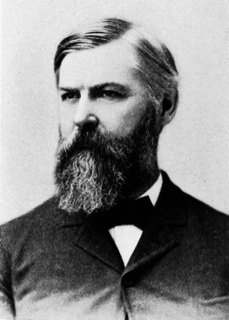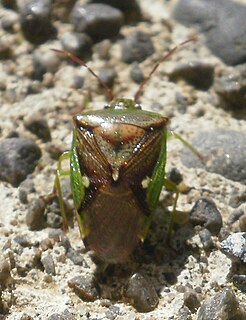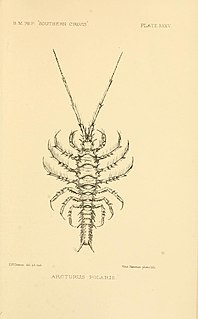
Karl Pearson was an English mathematician and biostatistician. He has been credited with establishing the discipline of mathematical statistics. He founded the world's first university statistics department at University College, London in 1911, and contributed significantly to the field of biometrics and meteorology. Pearson was also a proponent of social Darwinism and eugenics. Pearson was a protégé and biographer of Sir Francis Galton. He edited and completed both William Kingdon Clifford's Common Sense of the Exact Sciences (1885) and Isaac Todhunter's History of the Theory of Elasticity, Vol. 1 (1886–1893) and Vol. 2 (1893), following their deaths.

Sir Charles Norton Edgcumbe Eliot was a British diplomat, colonial administrator and botanist. He served as Commissioner of British East Africa in 1900–1904. He was British Ambassador to Japan in 1919–1925.

Reginald Innes Pocock F.R.S. was a British zoologist.

William Daniel Conybeare FRS, dean of Llandaff, was an English geologist, palaeontologist and clergyman. He is probably best known for his ground-breaking work on marine reptile fossils in the 1820s, including important papers for the Geological Society of London on ichthyosaur anatomy and the first published scientific description of a plesiosaur.
Sir Albert Charles Seward FRS was a British botanist and geologist.
Lilian Suzette Gibbs (1870–1925) was a British botanist who worked for the British Museum in London and an authority on mountain ecosystems.

John James Stevenson was an American geologist, born in New York City. He graduated from New York University in 1863, became professor of chemistry at West Virginia University for two years (1869–71), then served as professor of geology at New York University until 1909. During 1873–74 and from 1878 to 1880 he was geologist for the United States Geological Survey. He also served on the Pennsylvania Geological Survey from 1875 to 1878 and from 1881 to 1882. He was president of the Geological Society of America in 1898.

Edgar Albert Smith was a British zoologist, a malacologist.

Frederick Vincent Theobald FES was an English entomologist and "distinguished authority on mosquitoes". During his career, he was responsible for the economic zoology section of the Natural History Museum, London, vice-principal of the South-Eastern Agricultural College at Wye, Kent, Professor of Agricultural Zoology at London University, and advisory entomologist to the Board of Agriculture for the South-Eastern district of England. He wrote a five volume monograph and sixty scientific papers on mosquitoes. He was recognised for his work in entomology, tropical medicine, and sanitation; awards for his work include the Imperial Ottoman Order of Osmanieh, the Mary Kingsley Medal, and the Victoria Medal of Honour, as well as honorary fellowships of learned societies.
The djoongari, also known as the Shark Bay mouse and Alice Springs mouse, is a species of rodent in the murid family. The range of the species in Australia has become restricted to four islands in the Shark Bay area. It was once found throughout the western two thirds of Australia but it suffered greatly after the arrival of Europeans and feral animals. Its range was reduced to coastal sand dunes on Bernier Island, leaving it severely endangered. In 2003 the Australian Wildlife Conservancy (AWC) released some Shark Bay mice onto Faure Island in the hope of creating another population. Despite the presence of owls the reintroduction was successful and the population quickly grew to a larger size than that of Bernier Island, no longer leaving the species on the brink of extinction.

Edward Percival (Perceval) Wright FRGSI was an Irish ophthalmic surgeon, botanist and zoologist.

Bénédict Pierre Georges Hochreutiner (1873-1959) was a Swiss botanist and plant taxonomist.
The Clare island Survey was a multidisciplinary survey of Clare Island an island off the West coast of Ireland.
Chodsigoa is a genus of shrews in the tribe Nectogalini.

The forest shield bug is a species of shield bugs endemic to New Zealand. Forest shield bug nymphs prefer feeding on grasses, while adults will eat a variety of New Zealand plants including "hard-leaved" plants like rimu. O. vittatus was one of the first insects from New Zealand to be described by a European scientist.

Arthur Stanley Hirst also known as Stanley Hirst, was an English arachnologist and myriapodologist on the staff of the British Museum, and was an authority on Arachnida, especially Acari Myriapoda.
Catherine Alice Raisin was one of the most important early female geologists in Britain. Her research was primarily in the field of microscope petrology and mineralogy. She was the Head of the Geology department at Bedford College for Women, in London for 30 years, and strived for women's equality in education. Raisin was the first woman in Britain to lead a university geology department. She was also the Head of the Botany department at the Bedford College for Women.
Dorothea Frances Matilda "Dora" Pertz FLS was a British botanist. She co-authored five papers with Francis Darwin, Charles Darwin's son. She was made a Fellow of the Linnean Society, among the first women admitted to full membership.

Elsie Wilkins Sexton was an English zoologist and biological illustrator.
Lettice Digby was a British cytologist, botanist and malacologist. Her work provided the first demonstration that a fertile polyploid hybrid had formed between two cultivated plant species.












